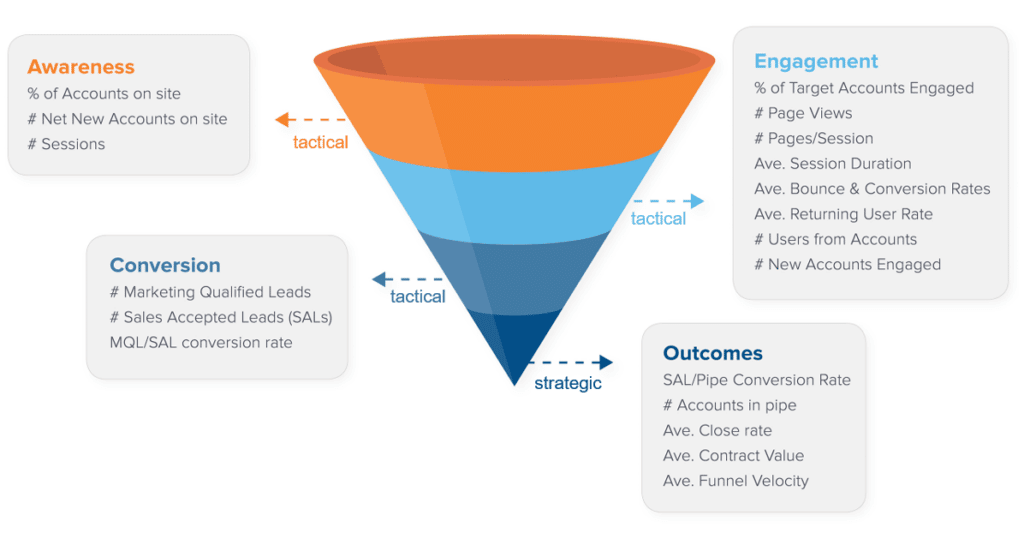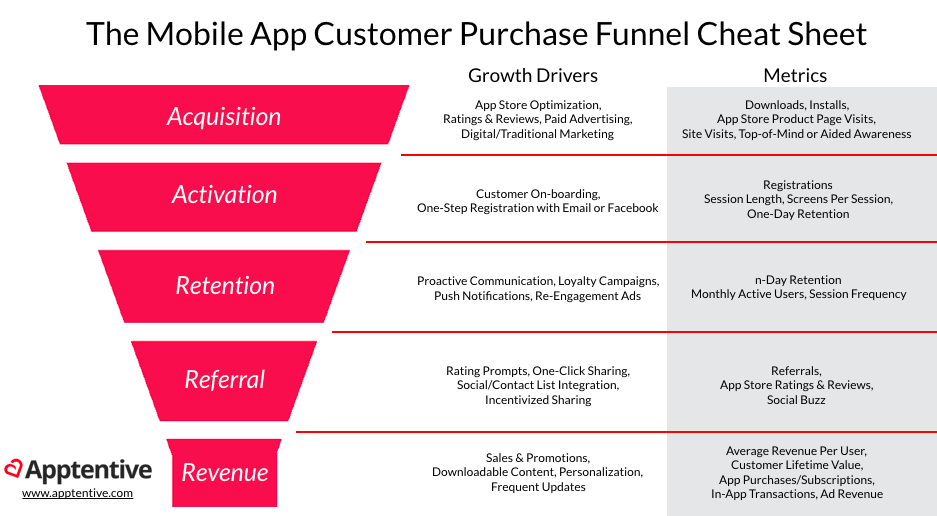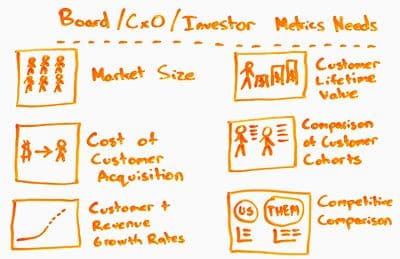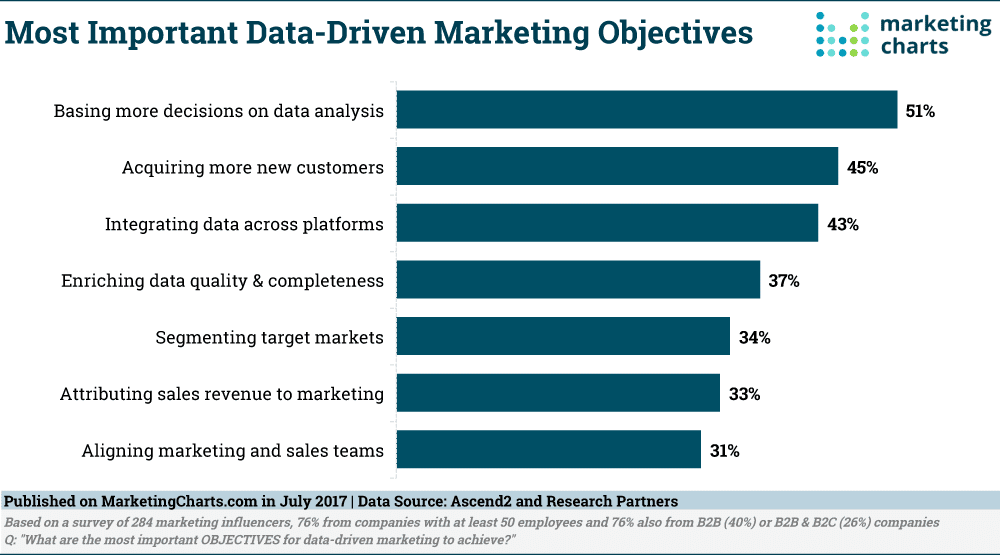No matter the size of your business, identifying KPIs is important when pushing to align departmental goals, as well as collective company goals. Knowing what triggers your target audience to engage with your brand will help you figure out exactly where your marketing dollars should be allocated.
KPIs also help you understand if you’re on the right track to hit the goals you’ve put in place. And as you continue to make progress, you’ll also be able to figure out specific trends that take place — times when you have the most engagement from your target audience to the times it slows down.
To be more specific, here are a few data-driven stats to be aware of:
- 66% of marketing data is used to better focus on targeting offers, messages, and content.
- Companies that adopt data-driven marketing are more likely to have an advantage over the competition and increase profitability. They are also 6 times more likely to be profitable year-over-year.
- 68% of companies say improving ROI measurability is the most important goal for a data management strategy.
In today’s blog post I’m going to focus on how you can identify marketing KPIs to track for growth. More specifically, looking at the following:
- Tracking metrics throughout the funnel
- Identifying KPIs that align with the business
- Translating marketing KPIs into digestible metrics for the executive team and board members
Let’s get started…
Tracking Metrics Throughout the Funnel
Any time you think of the funnel, it’s always split into three, being: TOFU, MOFU, and BOFU. Within each funnel phase are content assets and channels that help you reach your target audience, personalizing the experience as much as possible. Here’s an example:

Once you have an idea of what you are tracking specifically for marketing, you’ll then want to look at the most important KPIs that will help you make sense of the data you collect and how it will back out to overall business objectives as well.
Identifying KPIs that Align with the Business
Let me quickly differentiate KPIs that matter most to marketing and the shared KPIs between marketing and the business. But first, it’s important to figure out the following:
- What is the most desired outcome by tracking these KPIs?
- How will these KPIs help the business?
- Which KPIs are going to foster overall growth initiatives?
- How will you define what success really looks like?
For marketing, as an example, looking at open rates, CTRs, CPMs, CPCs, etc. all matter because these metrics allow you to figure out where you may need to optimize your campaigns. As for shared KPIs, the following make the most sense:
- Attribution
- New customers acquired
- Revenue
- LTV
- CPA
- CAC
- ROI
Let’s dive a little bit deeper here and say that you are a part of a mobile app company, and your job in marketing is to build awareness, drive traffic, increase installs, and enable retention. Your specific funnel may look something like this:

As you can see, every touchpoint looks at the growth drivers and metrics that will be tracked to understand overall performance and progress. Once these KPIs are nailed down, your next move is to translate them into KPIs that the executive team and board actually want to see.
KPIs Dashboard for the Exec Team and Board
Before I started running my company full-time, I worked heavily in the tech startup world and so reporting on KPIs that mattered most to the exec team and board members was key to showing progress. That being said, one of my favorite Moz Whiteboard Friday videos is this one presented by Rand Fishkin:
In this video, Rand walks through the specific metrics marketers care most about and then translates those metrics into financial ones that investors care most about. He states:
“They care about cost of customer acquisition. How much does it cost us to get one new customer?
They care about customer revenue, the revenue that we actually get from those customers that we’re bringing in, whether that’s going up, and overall growth rate. Are we getting more customers over time? Is that rate of growth expanding, meaning acceleration?
They care about customer lifetime value. Customer lifetime value is something that pretty much every metric we calculate as marketers should tie back to that, especially when we’re having conversations with these kinds of people. Essentially it is when a new customer comes in and they make any kind of purchase from us, they spend any type of dollars with us — a product, a service, a subscription, whatever it is — how much do we get over their customer lifetime?
Meaning if it’s an e-commerce play, it could be the case that they come and they buy five things from us over the course of two years on average, and that dollar total is $360, and 40% of that is gross margin for us. Essentially, the rest is the cost of goods. Okay, that’s customer lifetime value.
Or if you have a subscription business, like Moz is a subscription business, if you subscribe to our tools, we’ll charge you $99 a month or $149 a month. I think on average our customer lifetime value is essentially $120 times the average customer lifetime span, which is somewhere around 11 months all in. So it’s that number multiplied out. So $1200 or $1300, somewhere around there, that’s customer lifetime value.”

Wrapping It Up
Again, understanding the KPIs that only marketing cares about is one thing, and then aligning those KPIs with the business is another. It’s important to have both because they help drive better decision making and thus, help yield better results. This is a win-win for any company.
Finally, my advice is to make sure that you keep KPIs as simple as possible. Having a half-dozen of them ready to be presented and shown is more digestible than having two pages worth of reporting. More specifically, look at the KPIs and metrics that show progress and growth.







5 Responses